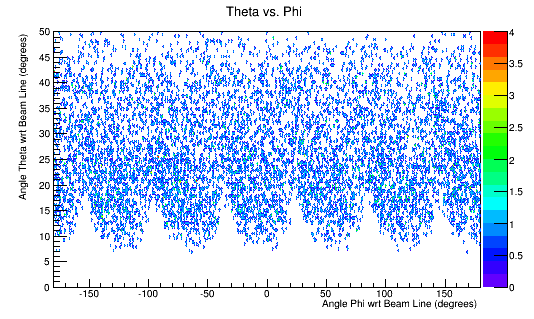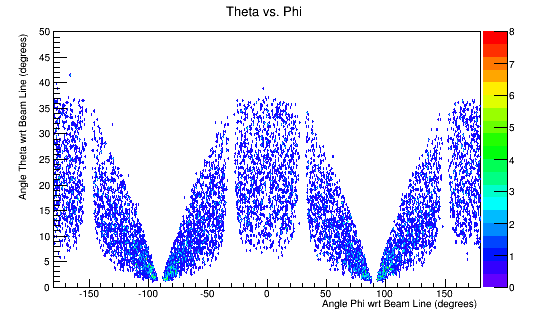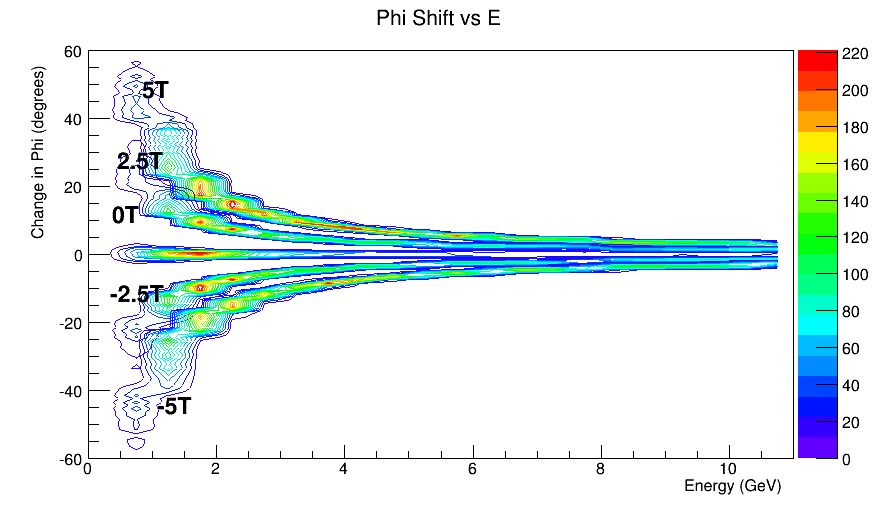Difference between revisions of "Results for Random Spread of Energy and angle theta in the Lab frame"
| (One intermediate revision by the same user not shown) | |||
| Line 13: | Line 13: | ||
<center>[[File:GenThetaLab.png]][[File:DetcTheta_Combined.png]]</center> | <center>[[File:GenThetaLab.png]][[File:DetcTheta_Combined.png]]</center> | ||
| − | While the range for the angle theta runs from 5 to 55 degrees, only generated particles that are below | + | While the range for the angle theta runs from 5 to 55 degrees, only generated particles that are below about 42 degrees will be reconstructed with a phi shift. |
| Line 28: | Line 28: | ||
<center>[[File:Theta_Phi_Before_rnd.png]][[File:Theta_Phi_After_rnd.png]]</center> | <center>[[File:Theta_Phi_Before_rnd.png]][[File:Theta_Phi_After_rnd.png]]</center> | ||
| − | This is the result of a random distribution of phi, theta, and energy. | + | This is the result of a random distribution of phi, theta, and energy. |
| − | |||
| − | |||
The electron energy shows an unequal distribution | The electron energy shows an unequal distribution | ||
Latest revision as of 22:52, 14 April 2016
0T Solenoid
The commands used in GEMC to create a uniform spread of electron energy across the solid angle of the detector:
<option name="BEAM_P" value="e-, 6.0*GeV, 30.0*deg, 10*deg"/> <option name="SPREAD_P" value="5.5*GeV, 25*deg, 180*deg"/>
Gives a uniform distribution across the solid angle components, theta and phi:
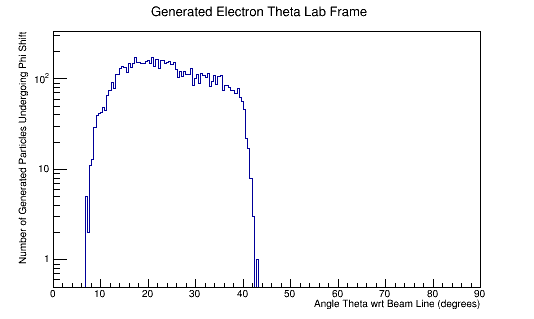
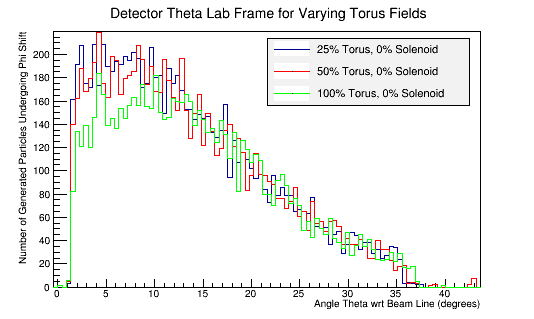
While the range for the angle theta runs from 5 to 55 degrees, only generated particles that are below about 42 degrees will be reconstructed with a phi shift.
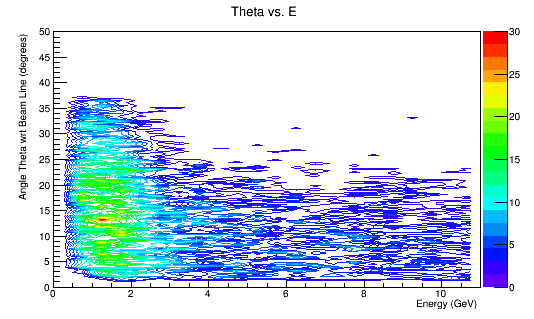
The change in Theta shows the effects of the Torus re-orienting the Moller electrons toward the beam line.
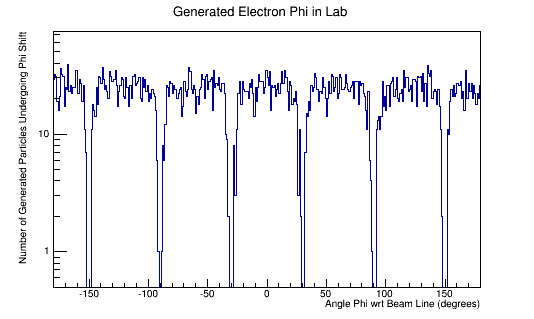
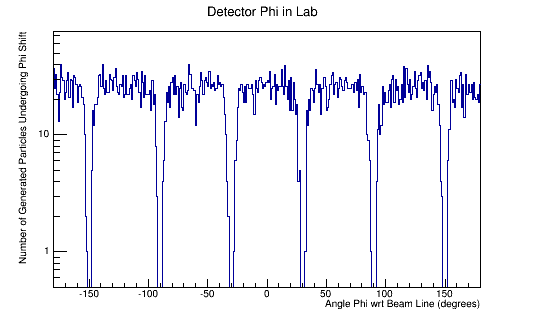
The Phi distribution shows the 6 different paddles of the the detector.
Looking at the relationship between the scattering angles theta and phi:
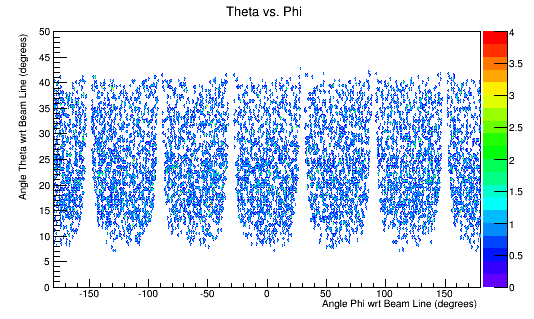
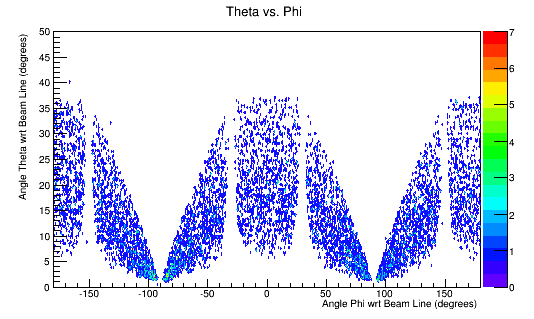
This is the result of a random distribution of phi, theta, and energy.
The electron energy shows an unequal distribution
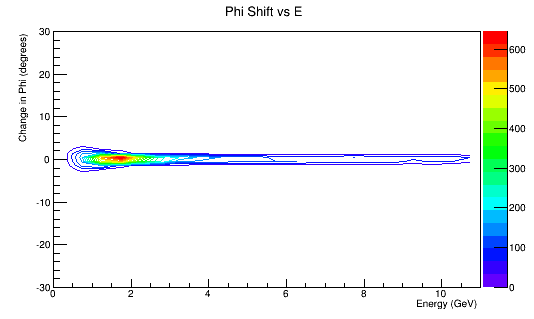
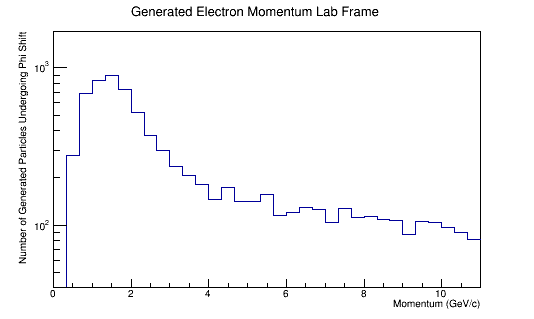
Electrons of energy around 2GeV are more easily influenced by the torus magnetic field.
5T Solenoid
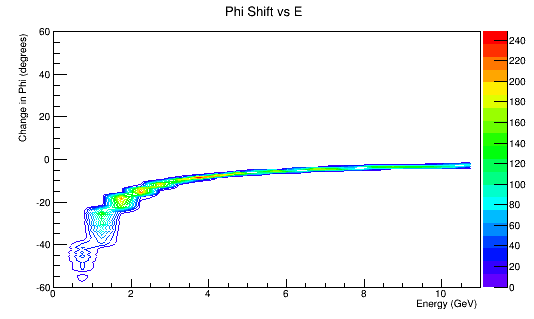
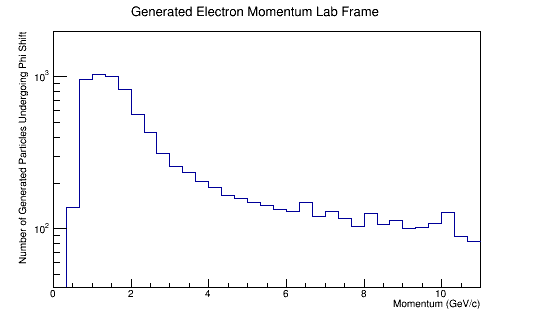
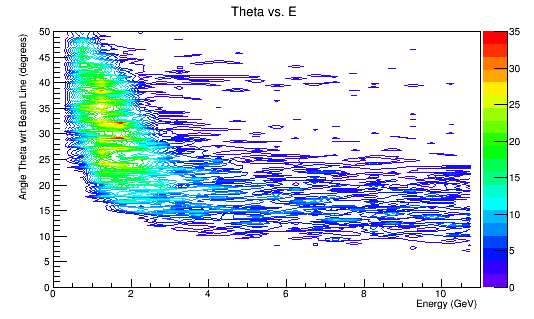
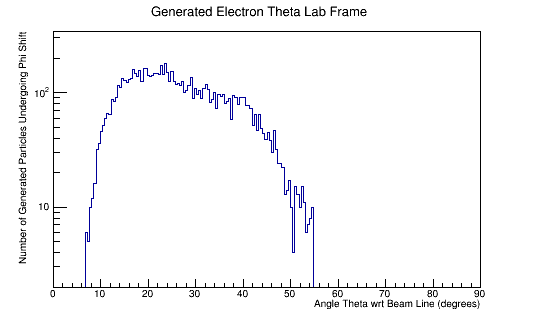
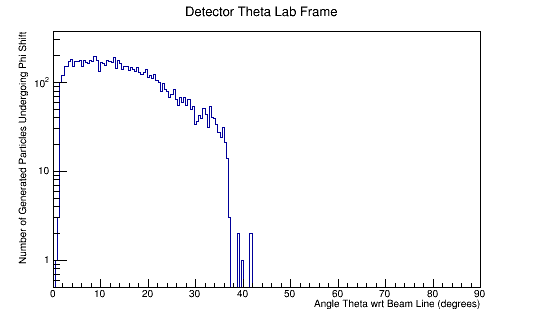
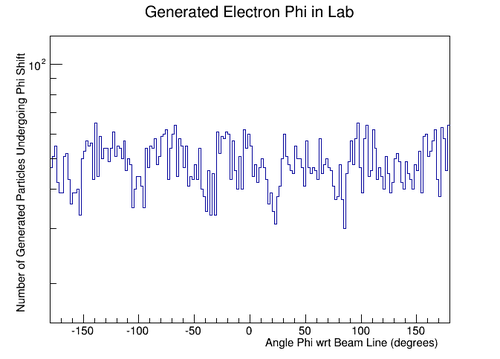
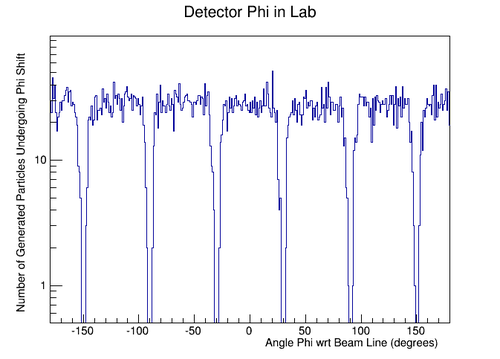
Looking at the relationship between the scattering angles theta and phi:
